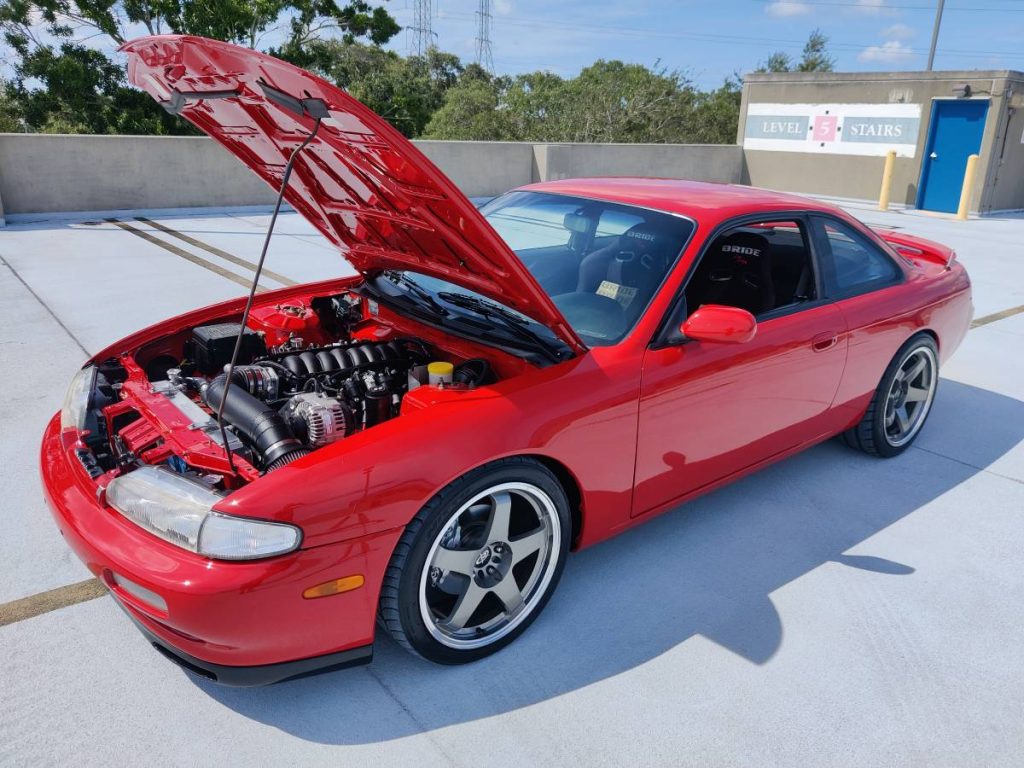Error Correction: The 1995 Nissan 240sx Is An S14 Chassis, Not S13

The Nissan 240SX, a popular sports car with a dedicated following, is often the subject of discussion and modification. Within these discussions, accuracy is key, especially when referring to specific generations. A common point of confusion arises when distinguishing between the different chassis codes used for this vehicle. This article aims to clarify a specific, and often repeated, error: the 1995 Nissan 240SX is an S14 chassis, not an S13.
Understanding Nissan Chassis Codes: S13 vs. S14
Nissan, like many manufacturers, uses a system of chassis codes to identify different vehicle platforms. These codes are more than just arbitrary letters and numbers; they provide crucial information about the car's design, engineering, and production period. Knowing the correct chassis code is essential for ordering parts, finding accurate repair information, and communicating effectively within the car enthusiast community.
The S13: The First Generation 240SX (1989-1994)
The S13 generation of the Nissan 240SX was produced from 1989 to 1994. It came in two main body styles:
- Hatchback: Known as the "fastback" or "silvia" style.
- Coupe: Often referred to as the "notchback."
The S13 is recognizable by its sleeker, more rounded body lines compared to its successor. Engine options for the S13 in North America included the KA24E (single overhead cam) and the KA24DE (dual overhead cam) 2.4-liter engines.
The S14: The Second Generation 240SX (1995-1998)
The S14 generation of the Nissan 240SX was produced from 1995 to 1998. It marked a significant redesign from the S13, featuring a wider, more aggressive stance and a generally more modern aesthetic. Unlike the S13, the S14 was only available as a coupe in the North American market.
The 1995-1996 S14 models are often referred to as "Zenki" (meaning "early period") while the 1997-1998 models are referred to as "Kouki" (meaning "late period." These terms refer to differences in the front and rear fascias, headlights, and taillights, which were restyled for the later years.
The engine option for the S14 in North America remained the KA24DE, but it received some minor updates compared to the S13 version.
Why the Confusion? Addressing the Common Error
So, why is the 1995 240SX so often misidentified as an S13? There are several potential reasons:
- Carry-Over Parts: While the S14 is a distinct chassis, some components may be similar or interchangeable with the S13. This can lead to confusion when ordering parts or working on the car.
- Overlapping Production: While North American production for the S13 ended in 1994, the transition to the S14 wasn't instantaneous globally. In some markets, S13 production may have continued slightly longer. This global variance can contribute to misinformation.
- Modifications and Swaps: The 240SX is a popular platform for modifications, including engine swaps, body kits, and other aftermarket upgrades. Owners may intentionally alter the appearance of their S14 to resemble an S13, or vice versa, further blurring the lines.
- Simple Misinformation: Sometimes, the error is simply due to a lack of accurate information. Online forums and discussions can perpetuate incorrect information if not properly corrected.
How to Identify an S14 240SX (1995-1998)
If you're unsure whether a 240SX is an S13 or S14, here are a few key identifiers to look for:
- Model Year: 1995, 1996, 1997, and 1998 models are definitively S14.
- Body Style: The S14 was only available as a coupe in North America. If it's a hatchback, it's an S13.
- Exterior Design: The S14 has a wider, more rounded body with distinct headlights and taillights compared to the S13. Specifically, the S14 "Zenki" (1995-1996) has different front and rear bumpers, headlights and taillights than the S14 "Kouki" (1997-1998). These are very distinct differences.
- Vehicle Identification Number (VIN): The VIN contains information about the car's make, model, and year of manufacture. You can use a VIN decoder tool online to verify the chassis code and other details.
Why Accuracy Matters
Using the correct chassis code is more than just a matter of semantics. It has practical implications in several areas:
- Parts Ordering: Ordering parts for the wrong chassis can lead to compatibility issues and wasted time and money. Many parts are specific to either the S13 or S14.
- Repair Information: Service manuals and repair guides are often organized by chassis code. Using the wrong information can lead to incorrect repairs and potentially damage the vehicle.
- Communication: Using the correct terminology ensures clear communication with other enthusiasts, mechanics, and parts suppliers.
- Resale Value: Correctly identifying your vehicle can impact its perceived value and desirability to potential buyers.
"Knowing the difference between an S13 and an S14 240SX is crucial for any owner or enthusiast. Accuracy ensures you're getting the right parts, following the correct repair procedures, and communicating effectively with the community."
Conclusion: The 1995 Nissan 240SX is Undeniably an S14
To reiterate, the 1995 Nissan 240SX is an S14 chassis. Understanding the distinctions between the S13 and S14 generations is vital for anyone involved with these vehicles. By using the correct chassis code, you can avoid confusion, ensure compatibility, and contribute to a more informed and accurate enthusiast community. Take the time to verify the chassis code of any 240SX you're working on or considering purchasing to avoid costly mistakes and ensure a smooth ownership experience. Remember to always double-check your information and consult reliable sources when in doubt. Happy motoring!
